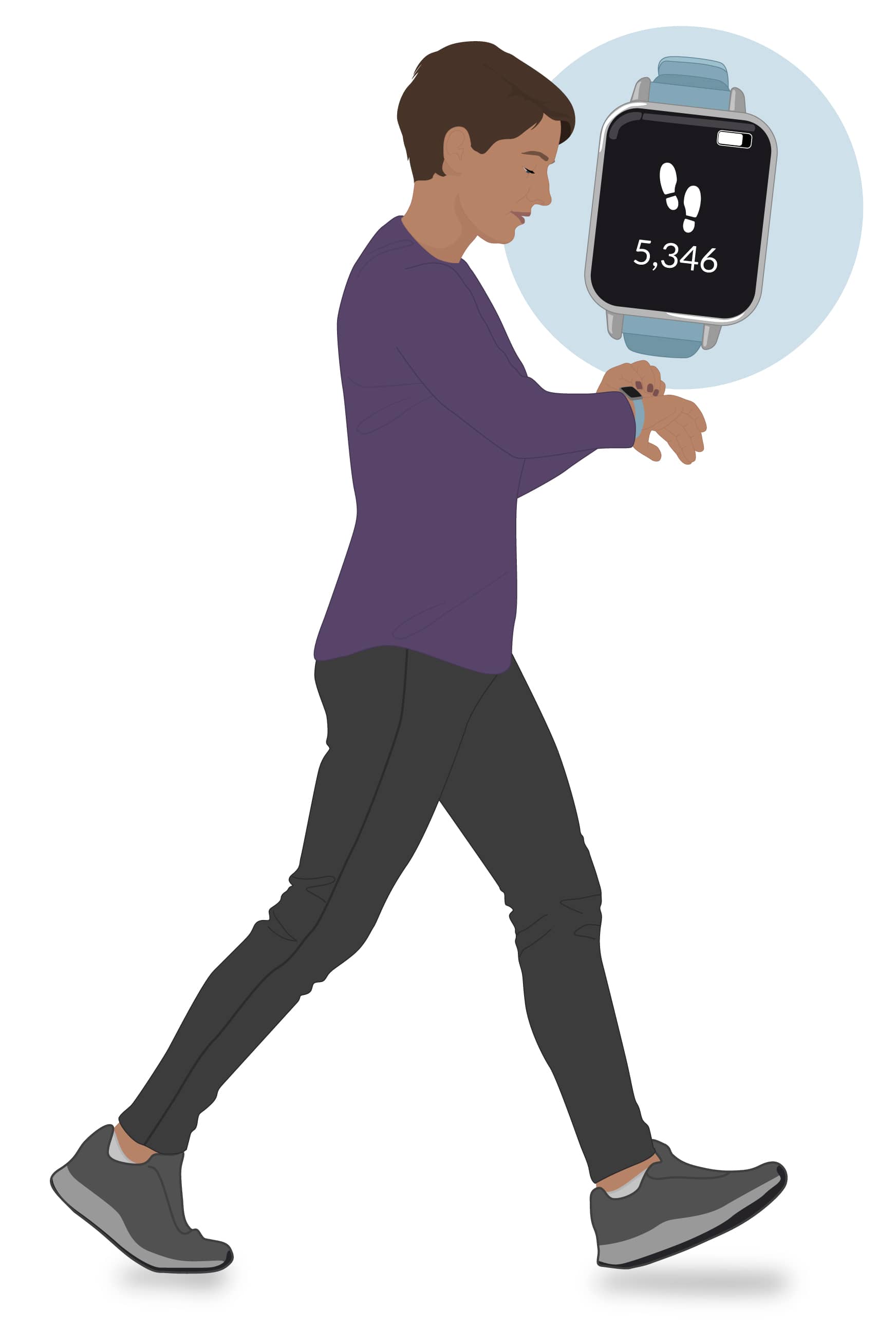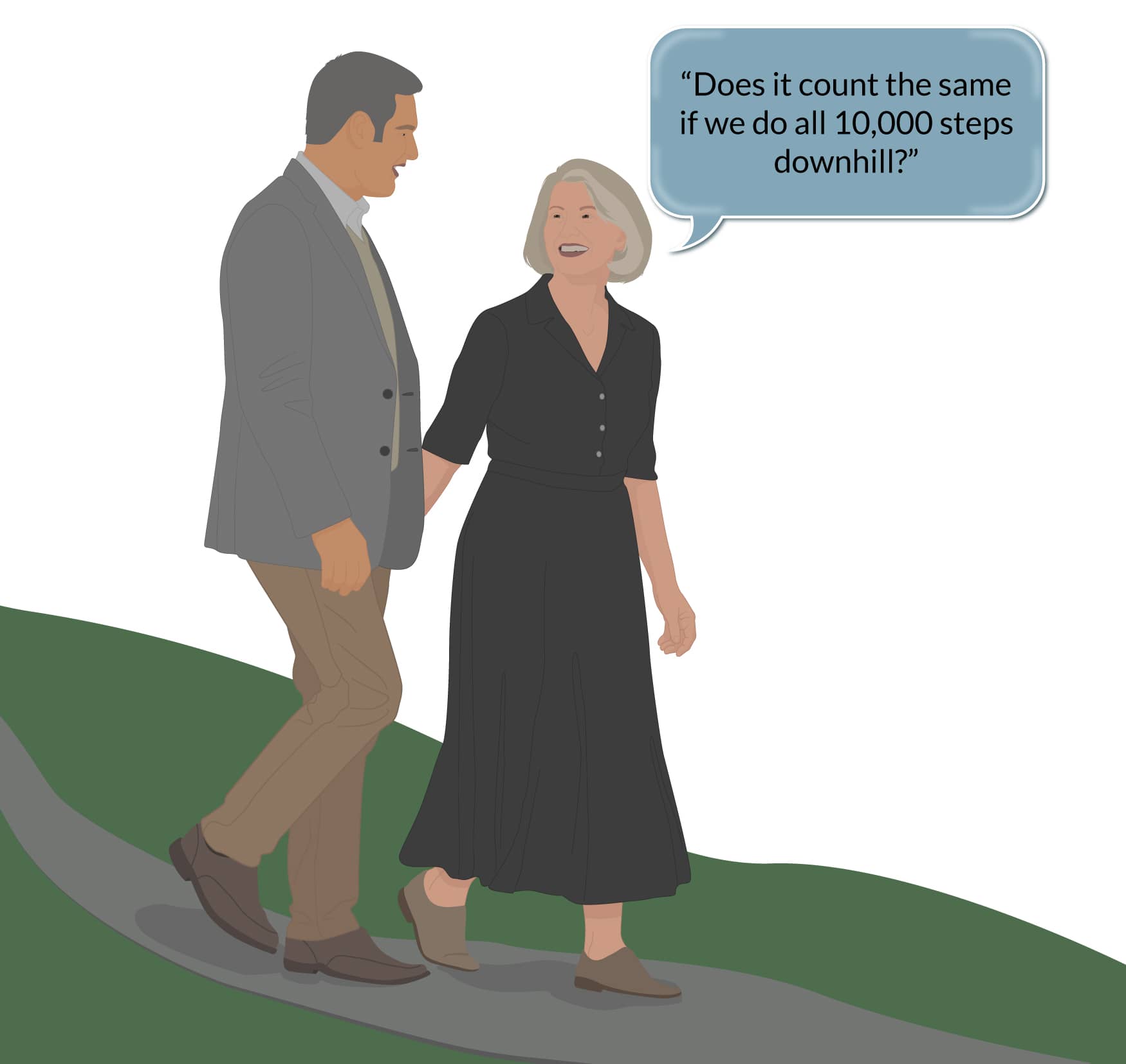Is walking 10,000 steps per day doing anything for us? In Outliers, Malcolm Gladwell famously asserted that 10,000 hours of practice are required to achieve expertise. Although he has since qualified this claim, his conclusion was based—albeit inaccurately—on the work of Swedish psychologist K. Anders Ericsson. Ericsson studied elite violinists who had accumulated approximately 10,000 hours of practice by age 20, but his findings were taken out of context.
Gladwell’s declaration that “10,000 hours is the magic number of greatness” extends far beyond the scope of Ericsson’s original research. To put it politely, we might say: Mr. Gladwell, with all due respect, we are grateful that you are not interpreting clinical anesthesia literature on our behalf.
There are many ways to critique this oversimplification. Working 40 hours per week for five years yields 10,000 hours—but time alone does not create expertise. Ericsson himself emphasized that mastery requires deliberate, focused practice with ongoing refinement, not simply accumulated hours. Gladwell’s narrative reduces a nuanced developmental process into a misleading soundbite.
The number 10,000 comes up in many areas of history and culture. Just a brief sampling includes:
- The number appears over 40 times in the Bible.
- In 1978, 10,000 was the world record, by an American, for correctly memorizing the order of digits in the mathematical constant pi (that record was subsequently broken).
- It is used frequently in literary works to symbolize something innumerable.
- 10,000 is an even composite number composed of two prime numbers multiplied and has 25 dividers; it’s a Harshad number, meaning that the sum of its digits (i.e., 1) is a divisor of 10,000 itself.
- It’s often used in math puzzles and games as its square root is 100.
- In Chinese literature, the term “wansui” appears frequently, referring to its literal meaning of 10,000 years, which implies a very long life.
- The Japanese corporation Yamasa™ developed the first pedometer in 1964, following the Tokyo Olympics. They called it a manpokei, translated as “10,000 step meter,” 44 years before Gladwell’s 10,000 axiom.
- The Roman numeral for 10,000 holds a special place and is denoted as X̅.
- Many of us use it in a pro or con argument when we retort, “Well, I could give you 10,000 reasons why…..”
There appears to be something inherently compelling about the number 10,000 for Homo sapiens—the species name science has assigned to us. Although Homo sapiens translates from Latin as “wise humans,” one might question whether we’ve earned that designation, given our recurring attraction to axioms that often rest on shaky foundations.
Achieving health with a daily milestone

This preamble brings us to what we want to interrogate—a number we should target daily to promote our health—getting 10,000 steps per day during our waking hours. Those who substantially somnambulate may also include those steps, although this may necessitate a tracking device for proof, given that you will likely be amnestic for the event. They may also wish to wear a helmet at bedtime for self-preservation.
We all know that regular exertional activity is a key facet of a health maintenance or health improvement program. The benefit of physical activity conveys measurable health benefits and can substantially improve the quality of life that one enjoys. In those with cardiovascular disease, diabetes, obesity, depression, and even certain cancers, its effects can be substantial when combined with nutrition, lifestyle modifications, and health professionals’ guidance.
Keeping track of steps is a simple, easily calculated number to quantify the physical activity of walking, whether we actively count them (dauntingly laborious) or use a device such as a fit-watch or even the app likely residing on your cell phone. It’s also a quantifiable target that can be targeted. The 10,000-step quest has gained widespread, if not global, access to our collective consciousnesses and is tenaciously pursued by many. Let’s look at what putting it to a testable hypothesis reveals.
10,000 and the influence of variability
Before we go down the rabbit hole of scientific proof—or its absence—of 10,000 steps per day, how far will 10,000 steps take us? And about those steps, does a hill or two or three have an impact? What about if those steps include steps in the form of stair steps or speedy ones? And what if one decides to employ rucking—do you even know what ‘rucking’ is? So many questions before we can even really think about the science.
Our inherent morphological variability
Back to homo sapiens, where variability in body architecture tends to be the norm vs the exception. We vary in height and leg length, and compounding the accuracy of any quantitative analytics, some of us take shorter steps while others take longer ones. Just as we generally see drug doses and physiological parameters in textbooks based on a 70 kg male (apologies to all females, but rest assured, this paradigm is finally beginning to change!), finite translation of steps to miles is variable, but generally 10,000 steps seem to fall in the vicinity of 4 to 5 miles or about two hours of walking. But even this translation can be quite imprecise. When age, sex, comorbidities, race, diet, and baseline fitness are factored in, such generalizations can become a house of cards.
And terrain—and the associated physics—plays a role as well. Walking up an incline requires lifting each step a bit higher, picking it up from a lower point against gravity compared to what occurs on level ground. The physical work is amplified not just from that required to move us forward but also from that needed to lift, created by Earth’s mass. Factor rucking into the equation, a physical activity with roots in the military, and you’ve added a backpack with weight (again variable), further complicating work effort, and requiring an additional calculus.

What research reveals about 10,000 steps per day
We’ve attempted to demystify the number 10,000 a bit, putting it in cultural and scientific contexts, noting that many factors can make definitive translations haphazard. With that in mind, let’s look at what we believe are a couple of the better studies examining the 10,000 steps per day regimen and its implications.
We like well-done meta-analyses (MAs), as they can illuminate a question that needs answering by pooling research studies. Ideally, MAs consider only high-quality studies (avoiding the “garbage-in, garbage-out” phenomenon) using stringent and objective methods to report an overall summary effect of an intervention. We also like large-sample trials that include and control for many variables and provide generalizable conclusions. With these biases noted, let’s look at a few of our representative selections.
- A recent MA using electronic daily step counts examined the association between all-cause death, cardiovascular (CV) morbidity or mortality, and glucose metabolism. All involved adults ≥ 18 years with follow-up ranging from 3 months to 10 years. Over 30,000 subjects in 17 studies were included in the analysis. For every 1,000 steps taken daily, increased from baseline, there was a decrease in risk of all-cause deaths, CV morbidity, and mortality. Glucose metabolism effects were less clear because it was inconsistently measured. Health benefits were seen below 10,000 daily steps, finding that walking an additional 1,000 steps per day conveyed benefits in a dose-dependent fashion.
- A prospective study involving over 72,000 adults (mean age: 61 years) was conducted to assess the impact of daily step count and sedentary behavior on health outcomes. Participants were stratified by electronically recorded sedentary time into two groups: <10.5 hours vs ≥10.5 hours per day, excluding sleep. During follow-up, there were 1,633 deaths and 6,190 major cardiovascular events. The greatest health benefit was observed in those taking 9,000 to 10,500 steps daily and exhibiting low sedentary time. Notably, a protective effect began to emerge at 4,000–4,500 steps per day. The authors concluded that any step count above the baseline average of 2,200 conferred health benefits, underscoring a clear dose-dependent relationship.
- A prospective cohort study published in JAMA examined over 2,000 Black and White adults aged 38–50, tracking them for nearly 11 years to assess associations between daily step counts and premature mortality. Participants wore digital step trackers and were stratified into three groups based on daily step volume: low (<7,000), moderate (7,000–9,999), and high (>9,999). The findings revealed that individuals taking at least 7,000 steps per day had significantly lower all-cause mortality compared to those with fewer than 7,000 steps. Importantly, step intensity—defined by stepping rate—was not associated with mortality risk.
All these studies have serious limitations. They are all observational, making causality impossible. Subjects taking the fewest steps tended to be those with moderate to serious baseline comorbidities. Even in the larger studies, death was a relatively rare event, precluding drawing bullet-proof associations with step count, age, sex, race, etc. Also, electronic trackers all have inherent weaknesses, and trackers were not standardized or calibrated in all the studies.
What are we to conclude about 10,000 daily steps?
We are amidst an epidemic of physical inactivity, and the toll is sobering. We are witnessing an ever-increasing rate of obesity, chronic metabolic and cardiovascular disorders, as well as psychological ailments, especially depression, PTSD, and anxiety, in the general population. While physical activity is heralded as an actionable salubrious pursuit, it is not the sole elixir to all our ills.
The American Heart Association includes verbiage on its website under the heading, “Is 10,000 steps really a magic number for health?” While the AHA does not endorse the pursuit of “10,000” as a proven remedy, it notes: “It’s a nice clean number and makes a good marketing message. You can see why it sticks, but there is not a lot of science behind it.”
The figure of 10,000 steps is largely arbitrary—perhaps appealing because it resonates subconsciously as a round, memorable goal. Nevertheless, it has gained traction, fueling the marketing of fitness trackers, including those from the original Yamasa™ company, which now incorporate features such as caloric expenditure and physiologic monitoring. While 10,000 steps may seem aspirational or even intimidating to some, the encouraging news is that—even though the supporting science remains somewhat limited—step counts above 2,200, especially when gradually increased, appear to be associated with reduced mortality and lower risk of cardiovascular complications.
There is neither magic nor folly in getting 10,000 daily steps, any more than is the axiom we should endeavor to get a good night’s sleep. Rather, it is best viewed as one of many titratable and actionable interventions to foster a healthful quality of life. Doing a few more steps each day is low-cost, low-risk, can be done solo or with others, and gets you out of the house. Exercise does not have to be miserable to count.
As CRNAs ourselves, we understand the challenge of fitting CRNA continuing education credits into your busy schedule. When you’re ready, we’re here to help.






